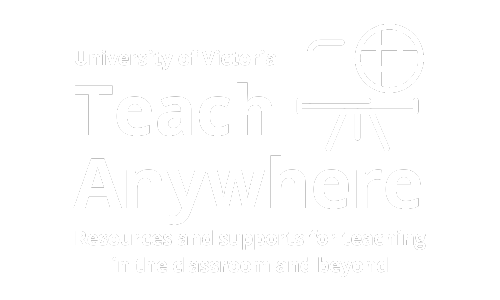The following guide is provided for teaching assistants (TAs) to assist in your task of leading online discussion forums. The most important aspect of online discussion forums is to support students’ learning. Not all suggestions below may be applicable in all disciplines or adhere to departmental policies. Please use this information as a guide only.
Discussion forums are a great tool to use to promote student engagement with material and to help foster community and peer-to-peer interactions within your online course.
They can be used for a range of options, some of which include and are not limited to:
- reflection based on prompts or readings
- knowledge construction with peer feedback
- answer and discuss study questions/problems
- communicating with all students in your class (which minimizes having to answer repeat questions)
Preparing for an asynchronous discussion forum session
- Be explicit with your students about your expectations for participation in discussion forms and students with a discussion rubric.
- Inform students of the value and purpose of these sessions, such as it will promote their engagement with the material and colleagues to help strengthen their critical thinking skills.
- Ensure discussions are relevant and goal-based with explicit guidelines, questions, and expectations that clearly align to intended learning outcomes (Ergulec, 2019).
- Design initial prompts to engage students more deeply. It is not helpful if students reiterate the course materials; rather prompt them to think outside the box and encourage their own thought processes. Once students are used to the discussion forum, you could ask students to provide questions based on class material – this removes students trying to guess what the instructor wants and engages them in the conversation more authentically.
Consider setting up student groups
-
- Limit to six students per group based on topic or randomly assigned before the course starts
- Ask the students to assign different roles to the group members
During asynchronous online discussion sessions
- Be present
- Read the discussion forums regularly
- Encourage students to bring in their work or life experiences
- Promote peer-peer interactions throughout the discussion session
- Help students construct their knowledge by modifying their thoughts and ideas in response to feedback from others (Ng, Cheung, & Hew, 2012)
- Include images or sound files to the forum and encourage students to do the same
- If a student is not actively participating in a discussion, you may need to follow-up with that student personally (March & Anthoney, 2020)
General time-saving tips for using online discussion forums
- Do not set a specific time for students to respond (e.g., 3PM). Your students may be in different time zones and managing jobs and other work in-between classes. Instead, consider suggesting ‘3 posts within the week’.
- Be present, but not too present. Instructor presence is important but too much from the instructor leads to students only responding to the instructor and not to each other. When posting, do so to summarize what has been said so-far and to offer some questions to help students in their thinking and reflection of the course material.
- Recommend to your students that they ask any questions about content or material via the discussion forum and promote peer-feedback and engagement by allowing a chance for students to respond. Make it clear in your course outline that you will answer all student queries on the discussion forum (unless they are of a private or confidential matter). If students continue to e-mail, you can anonymize their questions and still post on the discussion forum. This way, all students receive the same information and you do not have to reply to the same questions multiple times.
- Set a schedule for when students can expect a reply and stick to it. This allows students to know when they can expect an answer and helps remind students that you are not available 24/7.
- Give students a chance to reply and communicate between each other. For students unfamiliar with this, that may mean a bit of guidance is required from you as the facilitator. But once students get the hang of it, you will see the conversation on the forum flow without much interference from you.
Additional Resources
-
Ergulec, F. (2019). Design and facilitation studies used in asynchronous online discussions, Malaysian Online Journal of Educational Technology, 7(2), 20-36, DOI: http://dx.doi.org/10.17220/mojet.2019.02.002.
-
March, L., & Anthoney, M. Online discussion doctor: remedies for 8 ailments. Retrieved on March 30, 2020 from: https://teaching.unl.edu/online-discussions-doctor-remedies-8-ailments/
-
Ng, C. S. L., Cheung, W. S., & Hew, K. F. (2012). Interaction in asynchronous discussion forums: peer facilitation techniques. Journal of Computer Assisted Learning, 28(3), 280-294, DOI: https://doi.org/10.1111/j.1365-2729.2011.00454.x
This guide was developed by the LTSI TA Coordinator and updated during the Teaching Assistant Consultants’ (TACs) seminars in 2021-2022.
